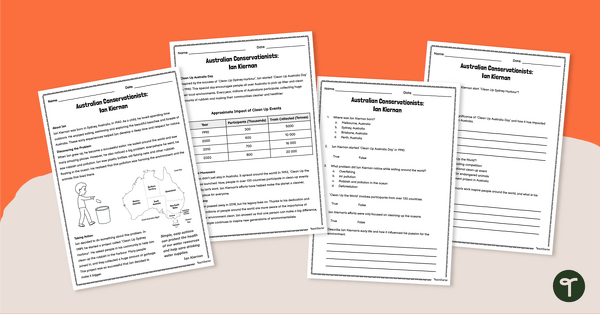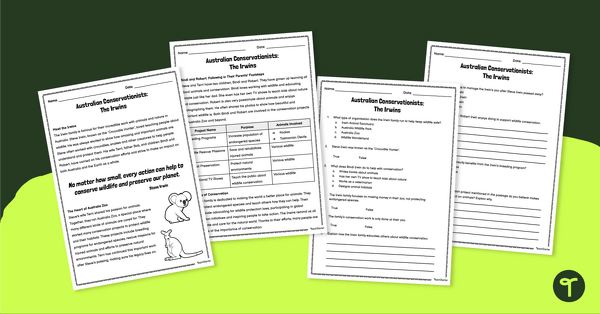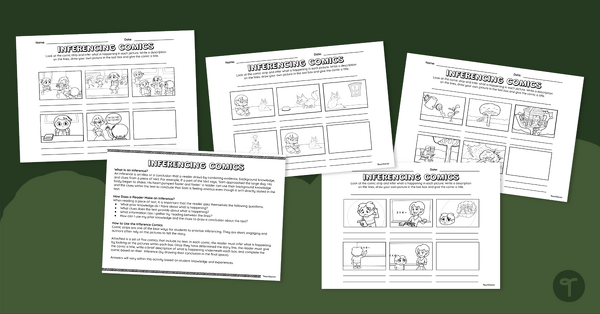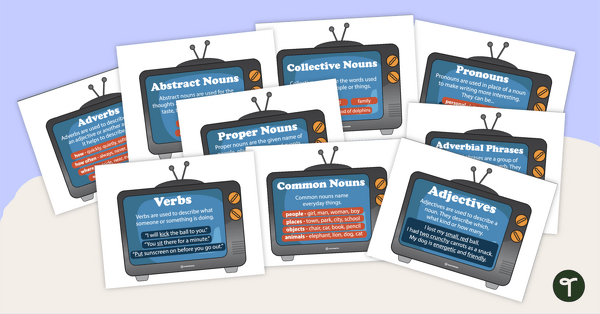Year 4
The English curriculum is built around the three interrelated strands of language, literature and literacy. Teaching and learning programs should balance and integrate all three strands. Together, the strands focus on developing students' knowledge, understanding and skills in listening, reading, viewing, speaking, writing and creating. Learning in English builds on concepts, skills and processes developed in earlier years, and teachers will revisit and strengthen these as needed.
In Years 3 and 4, students experience learning in familiar contexts and a range of contexts that relate to study in other areas of the curriculum. They interact with peers and teachers from other classes and schools in a range of face-to-face and online/virtual environments.
Students engage with a variety of texts for enjoyment. They listen to, read, view and interpret spoken, written and multimodal texts in which the primary purpose is aesthetic, as well as texts designed to inform and persuade. These encompass traditional oral texts including Aboriginal stories, picture books, various types of print and digital texts, simple chapter books, rhyming verse, poetry, non-fiction, film, multimodal texts, dramatic performances and texts used by students as models for constructing their own work.
The range of literary texts for Foundation to Year 10 comprises Australian literature, including the oral narrative traditions of Aboriginal and Torres Strait Islander Peoples, as well as the contemporary literature of these two cultural groups, and classic and contemporary world literature, including texts from and about Asia.
Literary texts that support and extend students in Years 3 and 4 as independent readers describe complex sequences of events that extend over several pages and involve unusual happenings within a framework of familiar experiences. Informative texts include content of increasing complexity and technicality about topics of interest and topics being studied in other areas of the curriculum. These texts use complex language features, including varied sentence structures, some unfamiliar vocabulary, a significant number of high-frequency sight words and words that need to be decoded phonically, and a variety of punctuation conventions, as well as illustrations and diagrams that support and extend the printed text.
Students create a range of imaginative, informative and persuasive types of texts including narratives, procedures, performances, reports, reviews, poetry and expositions.
(source: www.australiancurriculum.edu.au)
Achievement Standard
Receptive modes (listening, reading and viewing)
By the end of Year 4, students understand that texts have different text structures depending on purpose and context. They explain how language features, images and vocabulary are used to engage the interest of audiences. They describe literal and implied meaning connecting ideas in different textsÂ
They fluently read texts that include varied sentence structures, unfamiliar vocabulary including multisyllabic words. They express preferences for particular types of texts, and respond to others' viewpoints. They listen for and share key points in discussions.
Productive modes (speaking, writing and creating)
Students use language features to create coherence and add detail to their texts. They understand how to express an opinion based on information in a text. They create texts that show understanding of how images and detail can be used to extend key ideas.
Students create structured texts to explain ideas for different audiences. They make presentations and contribute actively to class and group discussions, varying language according to context. They demonstrate understanding of grammar, select vocabulary from a range of resources and use accurate spelling and punctuation, re-reading and editing their work to improve meaning.
(source: www.australiancurriculum.edu.au)
- Plus Plan

Information Report Checklists
Use these information report checklists when teaching your students how to edit their informative texts.
- Plus Plan

Landform Report – Mini Book Template
Download this information report template to use when teaching informative writing to primary students.
- Free Plan

Summer Paralympic Games Crossword Puzzle
Boost vocabulary skills with a printable Paralympic Sport Crossword Puzzle.
- Plus Plan

Picture the Dialogue - Quotation Mark Printables
Improve students’ abilities to write dialogue using correct punctuation with a set of ‘Picture the Dialogue’ writing worksheets.
- Plus Plan

Dialogue Tags List - Vocabulary Chart
Use a Dialogue Tags list to expand your students’ vocabularies and encourage better character development in their writing.
- Plus Plan

Quotation Punctuation Interactive Game
Make learning about quotation marks more exciting with an Interactive Quotation Marks Punctuation Game!
- Plus Plan

Wheely Wonderful Dialogue Tags Spinner
Spice up your students' writings and help them choose better dialogue tags with a ‘Wheely’ Wonderful Dialogue Tag Spinner.
- Plus Plan

Australian Conservationists: Ian Kiernan – Comprehension Worksheet
Learn about Ian Kiernan and his conservation work with this 2-page reading passage and accompanying comprehension questions.
- Plus Plan

Australian Conservationists: The Irwins – Comprehension Worksheet
Learn about the Irwin family and their conservation work with this 2-page reading passage and accompanying comprehension questions.
- Plus Plan

Dealing With Direct Speech - Worksheet
Use this worksheet when teaching students the rules for punctuating direct speech using double quotation marks.
- Plus Plan

Information Report Text Type Poster With Annotations
Display this information report with annotations to help students identify the structure of this type of text.
- Plus Plan

Persuasive Devices Crossword
Familiarise your students with the most common persuasive devices with an engaging crossword puzzle.
- Plus Plan

Rhetorical Questions Interactive Activity
Explore rhetorical questions with your students using this digital game perfect for your persuasive writing lessons.
- Plus Plan

Subordinating Conjunctions Task Cards
Use this set of 24 task cards to help students practise identifying and constructing sentences using subordinating conjunctions.
- Plus Plan

Subordinating Conjunctions Posters
Display this colourful and informative subordinating conjunctions poster set to remind your students of the functions and types of subordinating conjunctions!
- Plus Plan

Subordinating Conjunctions Game Show Interactive Activity
Use this interactive digital activity to assist your students in practising identifying and constructing sentences using subordinating conjunctions in a fun way!
- Plus Plan

Label the Non-Fiction Text Features Worksheets
Have your students label text features in non-fiction texts with this set of three differentiation text features worksheets.
- Plus Plan

Non-Fiction Text Features Teaching Slides
Explore the features of non-fiction texts with your students using this detailed and age-appropriate slideshow for primary school literacy lessons.
- Plus Plan

Inference Comics - Worksheet
Use this set of comic strips when teaching your students how to infer information from everyday situations.
- Plus Plan

Find the Adverbial Phrases Worksheet
Use this simple yet effective adverbs worksheet to assess students’ ability to identify adverb groups (adverbial phrases) in sentences.
- Plus Plan

Adverbial Phrases Category Sorting Game
Use this fun adverbs game in your literacy lesson or small groups to help students grasp the concept of adverb groups!
- Plus Plan

Adverbial Phrases Comprehension Task: The Secret Garden
Help your students identify adverb groups in descriptive writing with this comprehension worksheet.
- Plus Plan

Hunting for Homophones – SCOOT! Task Cards
Get your students to identify the correct homophones in sentences with this set of 36 task cards for your vocabulary lessons.
- Plus Plan

Homophone Mandala Flower Worksheets
Have your students create a colourful mandala flower while simultaneously demonstrating their understanding of common homophones.
- Plus Plan

Homophones in the Dictionary Worksheets
Help your students become familiar with the meanings and spellings of common homophones with this differentiated dictionary skills worksheet.
- Plus Plan

Year 4 Magazine - What's Buzzing? (Issue 1)
A beautifully designed, 24-page reading magazine specifically designed for Year 4 students.
- Plus Plan

Persuasive Sentence Starters Classroom Display
Help your students begin their persuasive writing with a strong sentence starter.
- Plus Plan

Homophones Poster Pack
Surround your students with examples of homophones with this set of 20 classroom posters.
- Plus Plan

Grammar TVs
Grammar presented on TVs.
- Free Plan

Finding the Main Idea - Graphic Organiser Templates
A worksheet to use when teaching students how to find the main idea of a text.
- Plus Plan

Suffix Stars - Interactive Suffix Review
Practice reading and spelling plural nouns with an engaging Google Slides digital learning activity.
- Plus Plan

Using Suffixes - Grammar Worksheet
Review concepts related to suffixes with a printable grammar worksheet.